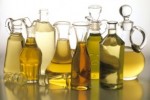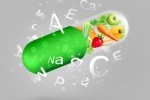Forum Replies Created
-
AuthorPosts
-
March 18, 2015 at 12:44 am #3551
Hi Chelsea,
Thanks for your response, it has been super helpful! I am currently 20 weeks pregnant and the migraines started early on in my pregnancy. I knew there were drugs I could take, but many are not safe for pregnant women, so I’ve been trying to find other methods for reducing them. You helped me identify possible triggers, like citrus fruit and citrus (which I eat often), and my recent chocolate obsession. I have since been working to reduce consumption of these possible triggers and have had good success reducing the number of migraines I experience. I was very interested in your riboflavin, magnesium, and CoQ10 supplementation suggestion and decided to look into it a bit more. The article I found discussed lifestyle factors (regular meals/balanced diet, regular sleeping patterns, physical activity), relaxation techniques, and accupunture as effective alternatives to medication (1). They suggested that, while the effectiveness of CoQ10, magnesium, and riboflavin supplementation in reducing migraines was low, such supplementation is fairly safe and may be a good option (1). I am considering supplementing with these nutrients or eating more foods containing these nutrients should my migraines become frequent again.
References:
1. Airola G, Allais G, Castagnoli I. Non-Pharmacological Management of Migraine During Pregnancy. Neurol Sci. 2010; 30(Suppl 1):S63 – S65. doi: 10.1007/s10072-010-0276-7.
March 18, 2015 at 12:20 am #3550Hi Melissa,
There are quite a bit of research and related dietary recommendations for lowering cholesterol. One of the most well known is TLC, or therapeutic lifestyle changes. TLC diet recommendations include limiting or avoid trans fats, saturated fat <7% of total calories, dietary cholesterol <200 mg/day, consuming 10 – 25 g soluble fiber/day, and consuming 2 g plant stanols or sterols/day (1). Other recommendations include at least 30 minutes of physical activity most, or all, days of the week, and reducing calories to acheive or maintain a healthy weight (1).
There is quite a bit of research regarding the efficacy of using fiber to decrease cholesterol, as suggested in the TLC diet. Fiber has been shown to reduce cholesterol (specifically LDL) through several mechansims. Those proposed include decreased cholesterol uptake from the intestines, increased conversion of cholesterol into bile acids and decreased bile acid reabsorption, resulting in decreased hepatic cholesterol pools and increased cholesterol excretion in feces, among others (2). The specific study and review I chose to cite on the subject specifically focused on flaxseed fiber and oat beta-glucan, respectively (2, 3). Both suggested that the greatest effect on cholesterol was seen when fiber was added to liquids (juices, milks, etc.), though general recommendations suggest obtaining fiber from whole food sources, like whole grains, fruits, vegetables, and legumes (1, 2, 3).
Similar to fiber, plant stanols and sterols have been shown to help block absorption of cholesterol from the intestines (4). Though they naturally occur in whole plant foods and vegetable oils, stanols and sterols are also being added to margarines, juices, and many more food products (1, 5). Recent research has shown that, while the current 2 g/day recommended intake is beneficial, even greater cholesterol lowering effects have been observed with stanol consumption up to 10 g/day (5).
Finally, there is some evidence supporting the effectiveness of certain probiotics in lowering cholesterol. Several strains of bifidobacterium and lactobacillus reuteri were found to assimilate and remove cholesterol from the blood and influence bile salt hydrolase activity (6, 7). While both studies used dietary supplements to administer the probiotics, this may also suggest that foods high in probiotics, like yogurt and fermented foods (kefir, tempeh, etc.), may have a similar cholesterol-lowering effect.
References:
1. U.S. Department of Health and Human Services. Your Guide to Lowering Cholesterol with TLC. National Institutes of Health. Dec. 5, 2005. http://www.nhlbi.nih.gov/files/docs/public/heart/chol_tlc.pdf.
2. Othman RA, Moghadasian MH, Jones PJH. Cholesterol-Lowering Effects of B-Glucan. Nutr Rev. 2001; 69(6):299 – 309. doi: 10.1111/j.1753-4887.2011.00401.x.
3. Kristensen M, Jensen MG, Aarestrup J, et. al. Flaxseed Dietary Fibers Lower Cholesterol and Increase Fecal Fat Excretion, but Magnitude of Effect Depend on Food Type. Nutr and Metab. 2012; 9(1):8 – 16. http://www.nutritionandmetabolism.com/content/9/1/8.
4. Heinemann T, Kullak-Ublick GA, Pietruck B, von Bergman K. Mechanisms of Action of Plant Sterols on Inhibition of Cholesterol Absorption. Eur J Clin Pharmacol. 1991; 40(Suppl 1):59 – 63. http://www.ncbi.nlm.gov/pubmed/2044646.
5. Laitinen K, Gylling H. Dose-Dependant LDL-Cholesterol Lowering Effect by Plant Stanol Ester Consumption: Clinical Evidence. Lipids in Health and Disease. 2012; 11(1):140 – 147. http://www.lipidworld.com/content/11/1/140.
6. Bordoni A, Amaretti A, Leonardi A, et. al. Cholesterol-Lowering Probiotics: in Vitro Selection and in Vevo Testing of Bifidobacteria. Appl Microbiol Biotechnol. 2013; 97:8273 – 8281. doi: 10.1007/s00253-013-5088-2.
7. Jones ML, Martoni CJ, Prakash S. Cholesterol Lowering and Inhibition of Sterol Absorption by Lactobacillus Reuteri NCIMB 30242: A Randomized Controlled Trial. Eur J Clin Nutr. 2012; 66:1234 – 1241. doi: 10.1038.ejcn.2012.126.
-
AuthorPosts






